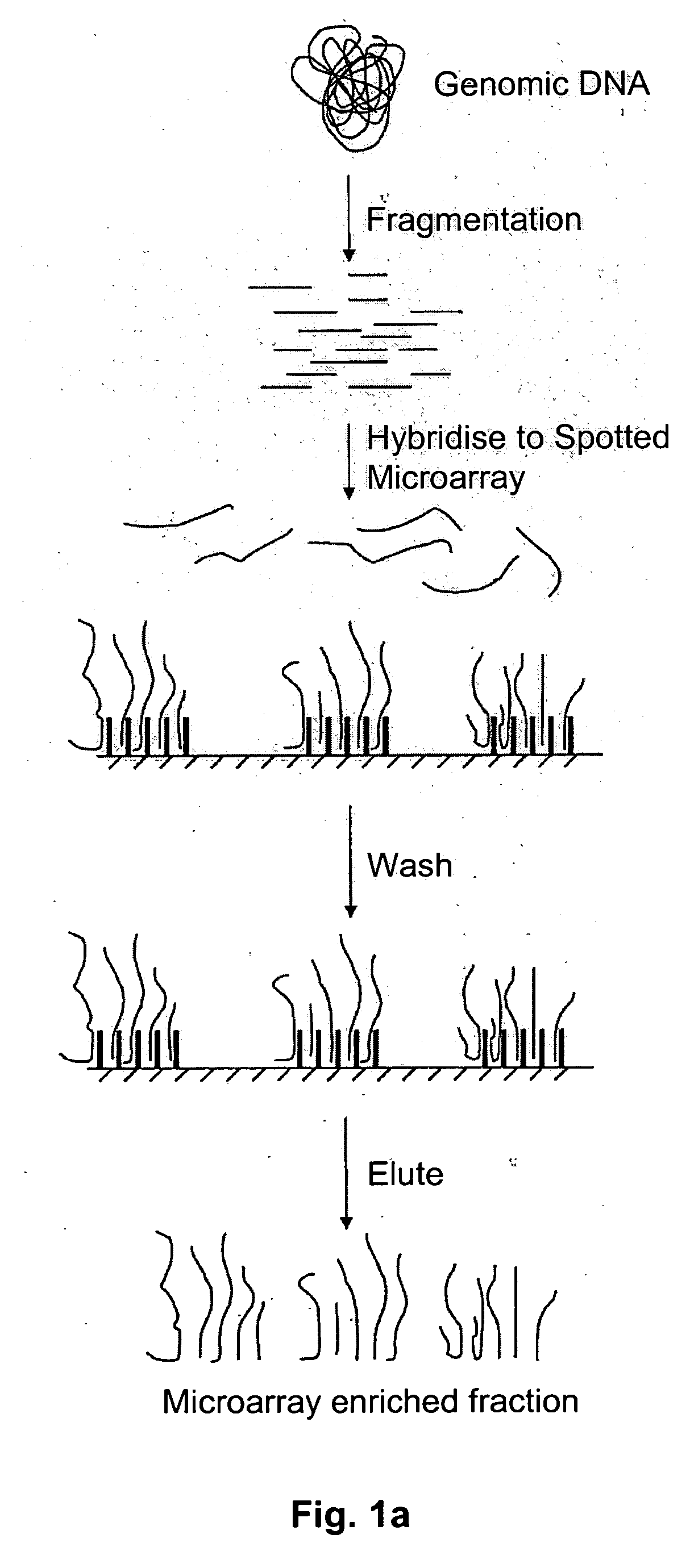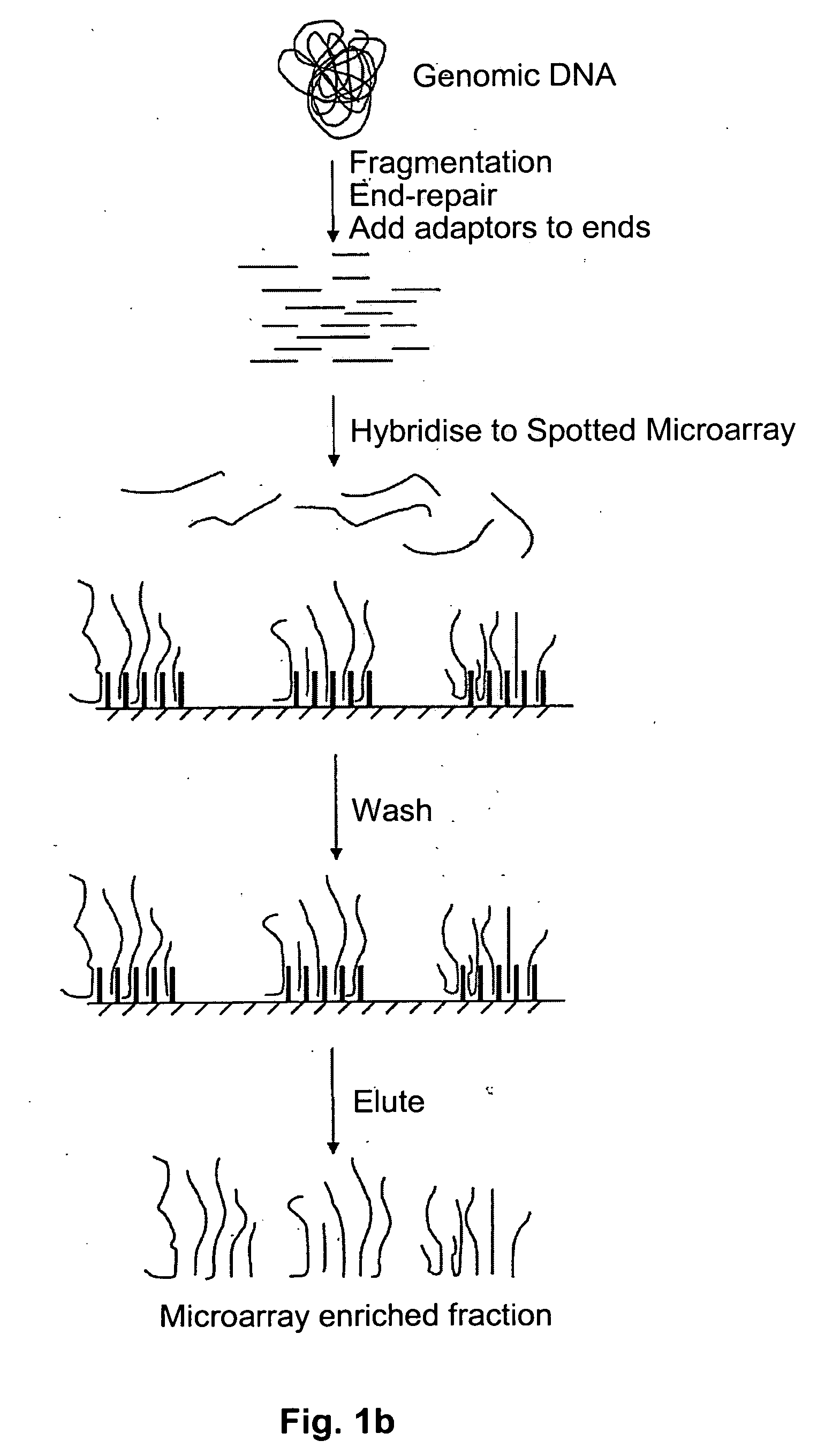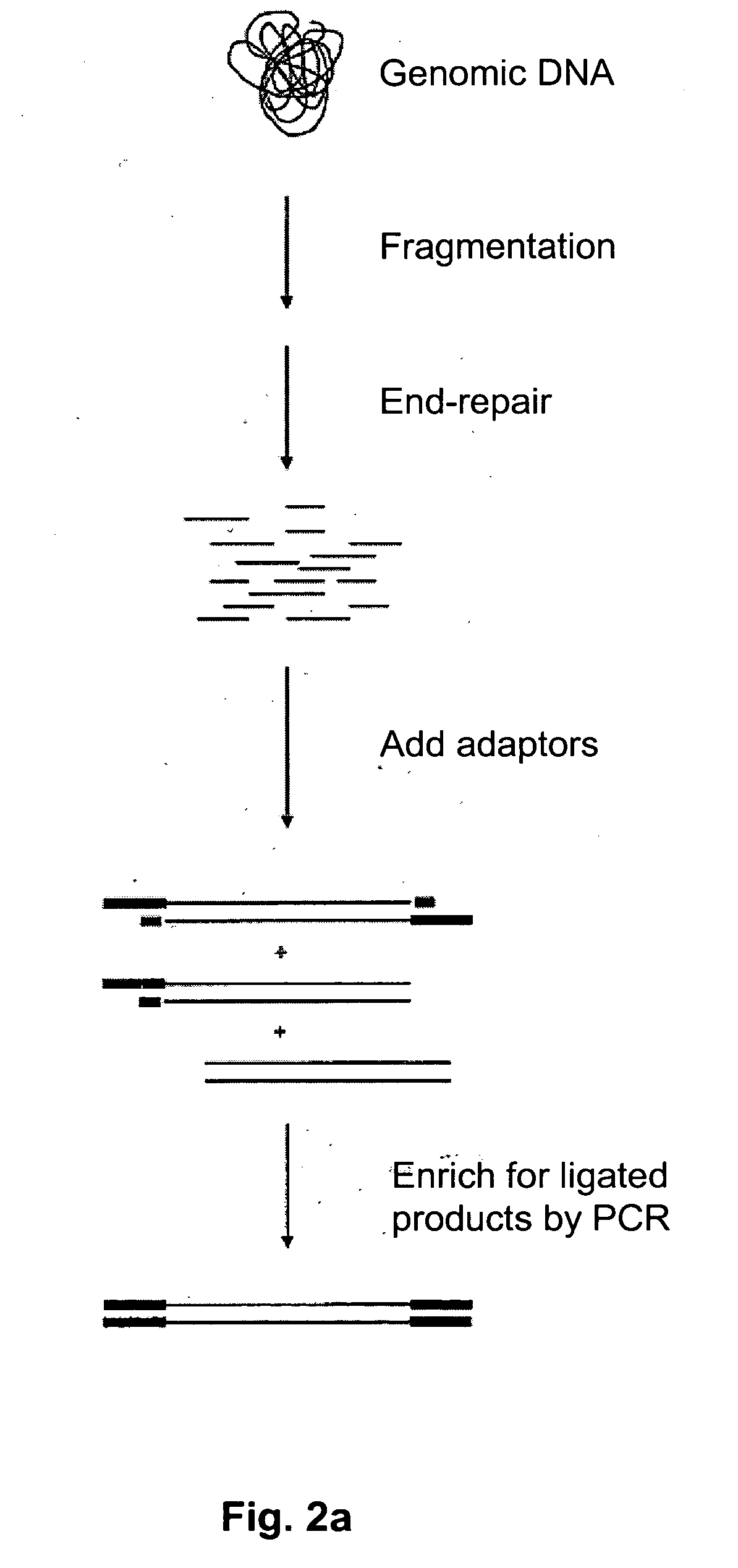Method of target enrichment
- Summary
- Abstract
- Description
- Claims
- Application Information
AI Technical Summary
Benefits of technology
Problems solved by technology
Method used
Image
Examples
example 1
[0094] Four probes can be designed that hybridise to the 5′ end of one exon from each of the four following genes present in the human BAC BCX98J21: PPP1R10, ABCF1, PRR3, GNL1. Each probe is 60 bases in length, contains a 5′ biotin group and hybridises uniquely at its intended sequence in the BAC. The sequences of the probes are as follows:
Probe #1 (PPP1R10)TCGGTTAAGGAAGCTGTCCAGGCCCTTGAGAAGTTCTTTGGGGTCTATGGGACCCGAACCProbe #2 (ABCF1)GCCGTATCTGAGGAACAGCAGCCTGCACTCAAGGGCAAAAAGGGAAAGGAAGAGAAGTCAProbe #3 (PRR3)CCGAAACGAAAGAAGCAGAATCATCACCAGCCACCGACACAGCAGCAGCCCCCGCTGCCCProbe #2 (GNL1)CTCCCGTTTGTCCTGCAACTGCTTCTTCTTCTGCTTCACGCTGAATGGCTTCTTCCTCGG
[0095] A solution is prepared containing a mixture of all four probes at a concentration of imicromolar each in 5×SSC buffer and is added to a tube containing 1 microgram of BAC DNA that has been previously fragmented to less than 1000 base pairs using a nebulizer (Invitrogen® #K7025-05) in a total volume of 50 ul. The solution is heated to 97.5° ...
example 2
[0097] A set (500,000) of probes can be designed that hybridise to unique positions among the 10 regions of the human genome selected by the HapMap ENCODE resequencing and genotyping project. Each probe approximately 60 bases in length and contains a 5′ phosphorothioate group.
[0098] A solution is prepared of a mixture of all probes at a total concentration of 10 micromolar in 100 mM potassium phosphate buffer pH7. The probe set is grafted onto the surface of an array chip by flowing the solution of probes over the functionalised array surface at 15 ul / min at 51° C. The chip is then washed by pumping consecutively across the surface of the array: 100 mM potassium phosphate buffer pH7, TE buffer (10 mM Tris pH8, 10 mM EDTA) and 5×SSC.
[0099] 1 ug of total human DNA can be fragmented to less than 1000 base pairs using a nebulizer (Invitrogen #K7025-05). The DNA is diluted to 10 nM in 5×SSC and then pumped onto the surface of the array. The array is heated to 97.5° C. for 5 minutes, th...
example 3
[0100] 1 ug of total human DNA can be fragmented to less than 1000 base pairs using a nebulizer (Invitrogen #K7025-05). The DNA is diluted to 1 nM in 5×SSC and then pumped onto the surface of an Affymetrixl® Genechip® Exon Array spotted microarray. The array is heated to 97.5° C. for 5 minutes, then cooled to 45° C. The array is further incubated at 45° C. for 16 hours to anneal the fragmented total human DNA to the primer oligonucleotides on the surface of the array. Non-hybridised DNA is then removed by washing the surface of the array with 3 cycles of the following consecutive wash solutions: 6×SSPE / 0.01% Tween-20, 100 mM MES / 0.01% Tween-20. The DNA that has hybridised to the surface probes can be recovered by pumping TE (10 mM Tris pH8, 1 mM EDTA) onto the array and heating the array to 97.5° C. for 5 minutes. Immediately thereafter, the contents of the array are pumped into a collecting tube at 97.5° C. and cooled to 4° C.
PUM
| Property | Measurement | Unit |
|---|---|---|
| Volume | aaaaa | aaaaa |
| Volume | aaaaa | aaaaa |
| Volume | aaaaa | aaaaa |
Abstract
Description
Claims
Application Information
 Login to View More
Login to View More - R&D
- Intellectual Property
- Life Sciences
- Materials
- Tech Scout
- Unparalleled Data Quality
- Higher Quality Content
- 60% Fewer Hallucinations
Browse by: Latest US Patents, China's latest patents, Technical Efficacy Thesaurus, Application Domain, Technology Topic, Popular Technical Reports.
© 2025 PatSnap. All rights reserved.Legal|Privacy policy|Modern Slavery Act Transparency Statement|Sitemap|About US| Contact US: help@patsnap.com



